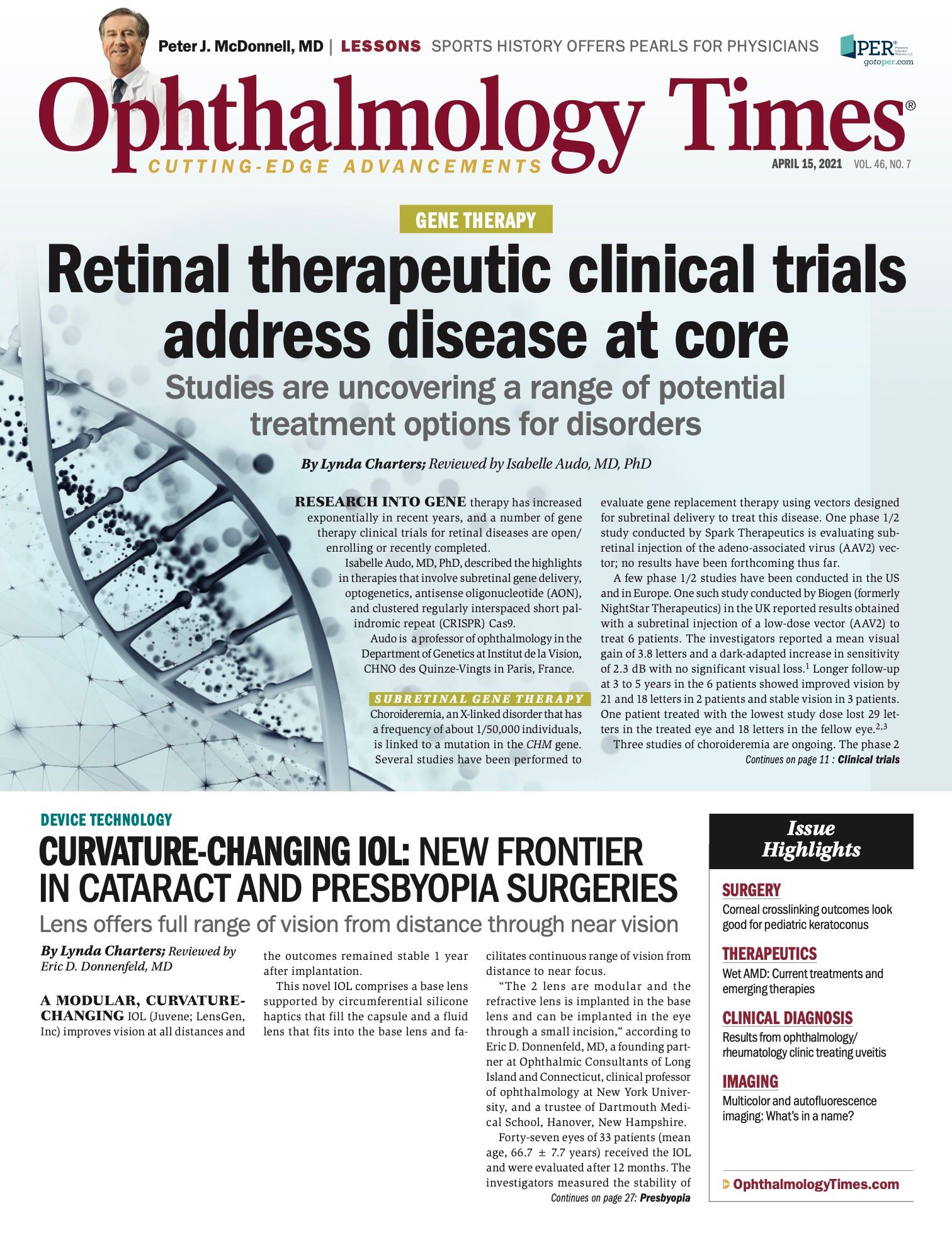Publication
Article
Digital Edition
Standalone MIGS delivers durable IOP control in phakic eyes
Author(s):

Reviewed by Florent Aptel, MD, PhD
Implantation of 2 trabecular micro-bypass stents (iStent Inject; Glaukos) is a safe and effective standalone treatment for open-angle glaucoma that provides long-term reduction of IOP previously uncontrolled by a single topical medication, according to Florent Aptel, MD, PhD.
On behalf of his co-investigators in the MIGS Study group, Aptel reported results from 5 years of prospective follow-up for a series of 57 eyes of 57 patients.
The data showed that IOP was significantly reduced throughout the study period with the majority of eyes remaining medication free.
Related: Study examines pairing phacoemulsification, implantation of microbypass stents
The surgery was uneventful in all cases, and postoperatively there was no evidence of inflammatory responses nor any complications such as hypotony, choroidal effusion, or hemorrhage.
“The findings from our evaluation of the long-term performance of the second-generation trabecular microbypass stents show that it constitutes a desirable treatment alternative when sufficient IOP lowering is not achieved with medical monotherapy,” noted Aptel, a professor of ophthalmology at Grenoble-Alpes University and University Hospital in Grenoble, France. “In addition to its efficacy for maintaining IOP control, by eliminating or reducing the need for medications, intervention with this MIGS procedure also enables improvement of the ocular surface.”
The MIGS device used in the study consists of 2 biocompatible, medical-grade titanium stents that are implanted through the trabecular meshwork into Schlemm’s canal in a tissue-sparing ab interno procedure.
“Each stent has 4 outlet lumens and provides access to multiple collector channels spanning up to 6 clock hours,” Aptel said. “Aqueous angiography shows that more expansive aqueous flow is established immediately after the implantation, and there may also be re-establishment of flow through previously dormant outflow channels.”
Related: Drainage device offers IOP lowering capabilities at 1 year
The prospective study enrolled patients who had a screening IOP of 18 to 30 mm Hg while on 1 medication and 22 to 28 mm Hg after medication washout.
The study participants had a mean age of 65 years and all were phakic.
The majority of patients were being treated with a prostaglandin analogue (86%), and the remaining patients were using either a beta blocker or carbonic anhydrase inhibitor.
Mean baseline cup:disc ratio was 0.7 and mean visual field mean deviation was -4.9 dB. Mean IOP for the 57 eyes was 19.5 plus or minus 1.5 mm Hg at screening and 24.4 plus or minus 1.3 mm Hg following the washout.
The entire cohort of 57 patients completed yearly follow-up visits through month 60 at which time 52 eyes (91%) were medication free.
At all yearly visits, through month 60, mean IOP was less than or equal to 15 mm Hg.
At the month 60 visit, mean medication-free IOP was 12.9 mm Hg, representing a 47% reduction from the preoperative value after washout IOP.
Related: Surgical decision-making in the era of MIGS
Analyses of IOP targets showed that IOP at month 60 was less than or equal to 18 mm Hg in 95% of eyes and less than or equal to 15mm Hg in 82% of eyes.
Compared with the screening IOP, IOP at month 60 was reduced greater than or equal to 20% in 81% of eyes, and 95% of eyes achieved a greater than or equal to 20% reduction from the preoperative washout IOP. Mean cup:disc ratio and deviation were unchanged.
The safety review showed that central corneal thickness was unchanged. BCVA was 20/40 or better in 93% of eyes preoperatively and at month 60.
Three eyes lost a single line of BCVA that was attributed to cataract progression in 2 eyes and cataract progression and need for trabeculectomy in 1 eye.
--
Florent Aptel, MD, PhD
e:faptel@chu-grenoble.fr
Aptel is a consultant to Glaukos.

Newsletter
Don’t miss out—get Ophthalmology Times updates on the latest clinical advancements and expert interviews, straight to your inbox.




